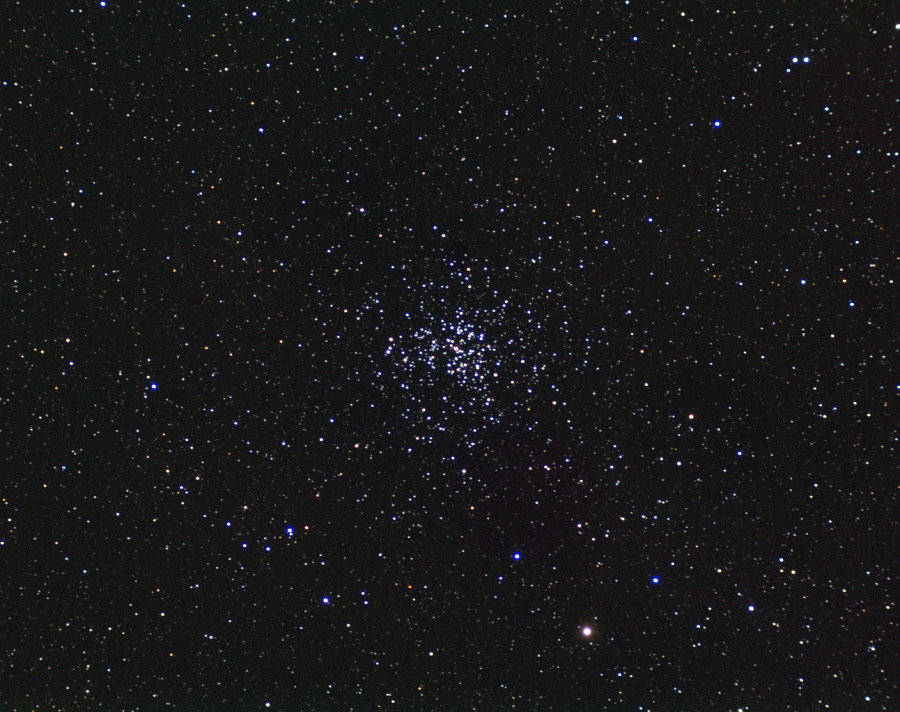So I recently decided it was time to buy myself a telescope. After years of staring at the sky with just my eyes, and occasionally a pair of cheap binoculars, I wanted something more powerful, and with more upgrade potential. I did tons of research, read hundreds of reviews and eventually settled on this, the Skywatcher Explorer 130P.
(And a right beauty it is too!)
I'm going to try to write a short review, from the point of view of an absolute beginner. Its mostly over-excited rambling though... I've taken some
Stellarium screenshots to give a rough idea of what you can see through the scope.
Retailer
I ordered the scope from
First Light Optics, an astronomy retailer based in Devon, UK. Shipping to Ireland was a little more expensive, but FLO have a brilliant reputation for customer service so I decided it was worth it. I ordered the scope on a Friday night, and received an email on the following Monday explaining that my scope was out of stock, but that they hoped to be getting it back in within a month, and that I was free to cancel my order at any time, should I want to. Four days later, I got another email saying that my scope was due in the next Monday and would be shipped to me immediately. When it shipped, I was sent a FedEx tracker number, and was able to track my scope and get an idea when it would arrive. FedEx sent it to France for a few hours, for a little holiday I guess, but it arrived in perfect condition this morning! So major thumbs up to FLO for excellent service and keeping me up to date with what was happening!
(Here's me next to the box for scale. My dad's a great photographer...)
First Impression
Once I got the many boxes, bubble wrap and tissue open, the scope itself was surprisingly easy to put together. Screw the tray to the tripod, secure the mount, attach the tube rings to the mount, and then (gently) plonk the OTA into the rings and secure. And that's pretty much it.
As simple as it is to put together however, the equatorial mount is somewhat less than intuitive to use. Despite the extensive amount of reading I had done before I ordered my scope, I was baffled by the mount and it took me a while to even figure out if I had it the right way around. For the record, I did... and I think there's only one way it can all go together. Next up it polar aligning it, but I'll have to wait for a clear night as Polaris has to be visible.
It is, of course, cloudy today (Friday) - new scope curse and all that, but I practiced getting the scope set up for the next clear night. I aligned the red dot finder, balanced it and practiced with the RA and DEC controls. The red dot finder works well and is very simple to align with the scope - aim it at a distant spire or lampost, check the eyepiece, make a few minor adjustments and and you're done. You can dim the red dot for night-time use too.
First Light!
It's now Tuesday, and the sky finally cleared! I dragged the scope outside around 9pm (it lives in my conservatory for now, so it's already close to cool enough) and set it up. I didn't polar align it tonight, as Polaris was behind a cloud when I started, so that'll have to be a project for the next night. So I ended up lifting the tripod around and aiming in the general direction of what I wanted to see, using the red dot finder to center it in the eyepiece. The RDF worked like a charm, just point and go.
First things first, the tripod. It could be a bit sturdier, as the scope suffers from the shakes when it's touched, whether from focusing the eyepiece or just bumping off it. It settles down reasonably quickly though, and there's a few things you can do to dampen the wobbling. Adding weights to the tripod helps, along with anti-vibration pads. I've heard of people putting sand in the tripod legs to stabilise it too, but I haven't tried that yet. It was pretty windy tonight so the scope was a bit on the shaky side, and that combined with the wind making my eyes water was giving me slightly blurry vision. So it was a less than ideal night for stargazing, but I was too excited to wait!
I aimed at Jupiter first, and wow, what a view! Jupiter is past it's best for viewing right now, being pretty low in the sky but it was the object I was most excited about so I had to give it a try. And honestly, I was blown away. I could clearly see Jupiter as a disc, surrounded by four moons. And when my eyes stopped watering (it was the wind, not run-away emotions, I swear!) and the wind died down, I could see faint banding. This view alone was worth the price of the scope.
It's still pretty small, about the size of a pea held at arms length, but it was absolutely amazing. I used the 25mm ep first, and then the 10mm for a closer view. I've read that the supplied 10mm is not great, but to my (extremely unexperienced) eyes, it was amazing. I kept the scope on Jupiter until it went behind a cloud just above the horizon.
(The moons were smaller than this in reality, but this is a good approximation of how Jupiter looked using the 10mm eyepiece.)
Next I moved onto my second target, M42, the Orion Nebula. Again, the RDF performed well, despite the nebula appearing fairly dim from my light polluted garden. It was another serious wow moment. The dust clouds were incredibly beautiful and I could make out 3 or 4 stars in the trapezium. Mind-blowingly beautiful. Again, I stayed with M42 until it got too low in the sky.
(There were fewer stars visible in my sky, but again, it's an approximation of what size the nebula was using a 10mm eyepiece.)
Then I just wandered around the sky for a bit, it's amazing how many stars you can see through the scope. I aimed it at a patch of sky that appeared dark and empty, and when I looked through the eyepiece, it was filled with stars. Next, I headed for M45, the Pleiades, my favourite star cluster. From my garden, with the naked eye, you can just about make out 5 stars in the cluster. With the 25mm ep, the field of view was filled with hundreds of stars. Gorgeous.
Finally, I swung the scope upwards and aimed at Venus. A lot of people say that Venus is slightly underwhelming through a telescope, but it was beautiful. I could see a very bright, perfect crescent shape. Lovely.
(Once again, this is how Venus looked using the 10mm eyepiece. Small, but beautiful!)
So all in all I spent about 2 hours outside. I stayed out until my hands were frozen and the sky had pretty much clouded over. It was a wonderful 2 hours. The telescope easily surpassed my expectations, and performed brilliantly, despite the somewhat less than optimum conditions. I still haven't quite figured out the equatorial mount, but that'll come with practice I guess. I absolutely cannot wait for the next clear night!
250 euro is not a bad price for the universe.




















